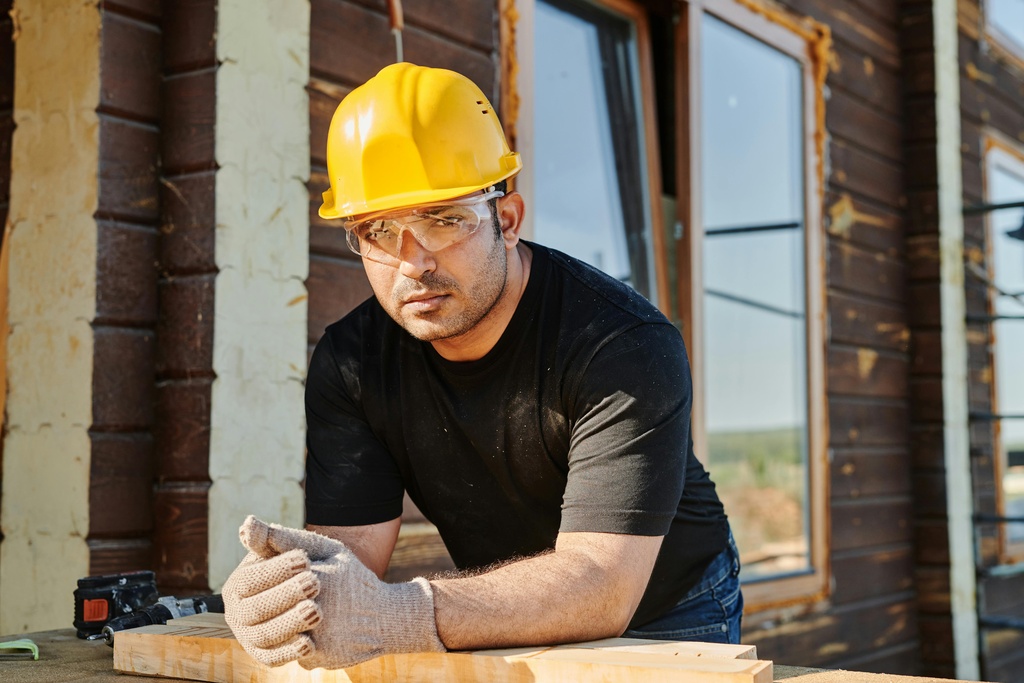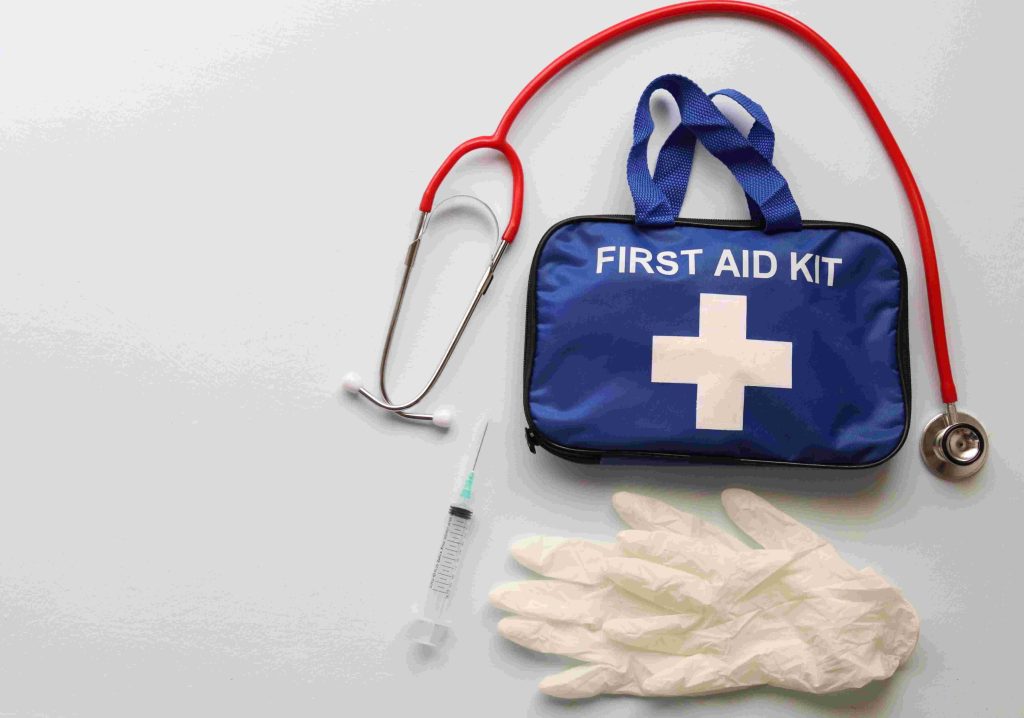
Home improvement projects can be incredibly satisfying endeavors, transforming your living space into a more functional, aesthetic, and comfortable environment.
However, this doesn’t mean such projects are without risk. DIY or “Do It Yourself” renovations often involve the use of heavy machinery, potentially toxic substances, and other hazardous conditions that could lead to injury if proper safety measures are not taken.
To help you maintain a safe working environment while improving your pole barn, barndominium, or shouse, we will delve into the essential safety equipment you should have on hand.
Table of Contents
Safety First: The Non-Negotiable Basics
Before picking up your hammer or power drill, it’s crucial to equip yourself with the most rudimentary safety gear. These are non-negotiable items that should be in your toolkit, irrespective of the project you’re working on.
From preventing eye injuries to ensuring your respiratory health, these essentials act as your first line of defense against common hazards in DIY projects.
Safety Glasses: Your Eyes’ Best Friend
When it comes to DIY home improvements, the importance of wearing safety glasses cannot be overstated. Your eyes are susceptible to a range of potential hazards, such as flying debris, dust, and even chemical splashes.
A single stray splinter or a drop of paint can lead to painful injuries or, in extreme cases, permanent damage to your vision. Investing in a high-quality pair of safety glasses with side shields can provide robust protection for your eyes.
Make sure the glasses meet the ANSI Z87.1 safety standards for maximum efficiency.

Gloves: More Than Just Comfort
Hand protection should be at the forefront of your mind when engaging in DIY activities. A sturdy pair of gloves can not only provide better grip but also shield your hands from sharp objects, splinters, and even chemical burns.
Select gloves based on the type of work you’ll be doing. For instance, leather gloves are great for woodworking, while you might need nitrile gloves for handling paint or other chemicals.
Ear Protection: Silence Is Golden
Operating power tools can expose your ears to noise levels that can cause permanent hearing loss over time. Whether you’re drilling holes or cutting wood, the incessant noise can be both a nuisance and a long-term health risk.
That’s where ear protection comes in. Depending on your comfort and needs, you can opt for either earmuffs or earplugs. These can significantly reduce noise exposure and protect your hearing during lengthy projects.
Read & Learn Beforehand: Specialized Projects Require Special Knowledge
When it comes to DIY home improvement, not all projects are created equal. The risks and safety requirements can vary widely depending on the scope and nature of your endeavor.
Here, we’ll delve into three specialized projects: DIY Pole Barns, Barndominiums, and Shouses, each of which has its own set of challenges and safety considerations. Finding a comprehensive guide can be a lifesaver when venturing into specialized DIY projects.
DIY Pole Barns: Not Your Typical Backyard Project
A pole barn is a large, versatile structure often used for purposes like workshops, garages, or storage facilities.
These are not your typical DIY projects and thus require special consideration and step-by-step instructions in terms of safety measures. Given their size and the different types of materials involved, a regular safety kit won’t cut it.
For instance, you’re likely to work at significant heights when constructing a pole barn.
Receive Quotes from Multiple Barndominium Builders & Kit Providers Near You Today (It's Free!)
Fill in this 1-minute form below and receive estimates for your project without having to find them yourself! Let them do the work.
This calls for specialized fall protection systems like safety harnesses and possibly even safety nets.
Operating large, heavy machinery such as boom lifts or bulldozers might also be part of the process, requiring you to upgrade from your standard safety glasses to full face shields and helmets.
Barndominiums: The Intersection of Home and Workshop
Today’s barndominiums are not simply refurbished barns but a distinct architectural genre combining residential luxury with functional utility spaces.
While many are built on steel frames for durability, timber post-frame options are also gaining traction for their aesthetic appeal.
These hybrid dwellings demand adherence to both residential and commercial building regulations, requiring vigilant planning and execution.
The multifunctional nature of barndominiums necessitates a multi-faceted approach to safety protocols. For example, the electrical systems may be a blend of residential and industrial setups.
It’s crucial to employ specialized electrical testing devices and insulated tools suited for both residential and industrial applications to ensure a safe living and working environment.

Shouses: A Unique Blend of Workshop and Home Comforts
Shouses, an inventive blend of a workshop and a residential space are more than just a combination of a shed and a house. They offer a seamless transition from living areas to workspaces, providing convenience and efficiency.
Unlike the more extensive barndominiums, shouses offer a compact yet highly functional design, perfect for those seeking both a cozy home and a dedicated work area. This unique configuration, however, brings with it specific safety considerations.
The compact nature of a shouse might give the impression that safety requirements are less stringent compared to larger structures like pole barns or barndominiums, but this is a misconception.
In fact, the smaller size can increase the complexity of safely operating larger equipment, heightening the risk of accidents.
The close quarters often mean working near electrical, plumbing, and HVAC systems, presenting a unique set of hazards. Furthermore, the limited space in shouses can result in inadequate ventilation.
This is particularly concerning when dealing with activities that produce fumes or dust. Therefore, using respirators becomes crucial to maintain air quality and protect your health while working on projects within a shouse.
These factors underscore the importance of adapting your safety approach to suit the distinct characteristics of a shouse, ensuring a safe and productive environment.
Emergency Preparedness: Expect The Best, Prepare For The Worst
No matter how cautious we are, accidents can happen. It’s essential to be prepared for emergencies that could arise during your project.
First Aid Kit: Immediate Attention Matters
Having a well-stocked first aid kit is crucial for treating minor injuries on the spot. Your kit should include antiseptics, a variety of bandages, pain relievers, and any other items pertinent to your project’s specific risks.

Fire Safety: A Stitch In Time
If your work involves flammable materials or electrical equipment, have a fire extinguisher handy.
Make sure it’s the right class of fire extinguisher for the materials you’re working with. Know how to use it, and check its expiration date.
Emergency Contacts: Always Within Reach
Make sure to have a list of emergency contacts readily available. This should include numbers for immediate family, close friends, and essential services like medical emergency lines or poison control centers.
Adapt And Evolve: Updating Safety Measures For Advanced Projects
As you gain more experience in DIY home improvement, your projects may grow in complexity. Advanced projects often introduce new risks that were absent in simpler tasks. This requires an update to your safety equipment and protocols.
From new types of machinery to different construction materials, here’s how you can evolve your safety practices to match the level of your projects.
Respiratory Protection: Breathing Easy During Complex Tasks
When you venture into more advanced DIY projects, you might find yourself working with materials that generate toxic fumes, dust, or aerosols.
In such cases, a simple dust mask won’t suffice. Investing in a respirator that filters out harmful particles and fumes is essential. Make sure to get one that is NIOSH-certified and fits snugly on your face for optimal protection.
Advanced Electrical Safety: Steering Clear Of Hazards
Advanced projects often require more complicated electrical work. Whether you’re installing a new lighting system or setting up an automated home network, electrical safety becomes a top concern.
Using an electrical tester to confirm if wires are live and ensuring that you’re using insulated tools can go a long way in preventing accidental shocks or electrocution.
Adaptability: Customizing Your Safety Gear
As you take on more specialized projects, you might find that general-purpose safety equipment doesn’t offer the level of protection you need. For instance, when welding, you’ll need not just eye protection but a full-face welding mask to shield against intense light and heat.
Similarly, tasks that involve heavy lifting may require back braces or other forms of support. In essence, as your projects evolve, so should your safety gear.
Final Remarks
Ensuring safety in DIY home improvement projects is not just about caution but also about preparation.
Investing in the proper safety equipment and taking proactive measures can mean the difference between a successful, rewarding project and a dangerous, costly mistake. Stay safe and happy DIY-ing!

